
Chorthippus is a large genus of acridid grasshoppers with around 230 described species. The genus may be subdivided into subgenera including: Altichorthippus, Chorthippus and Glyptobothrus, with other species not placed.
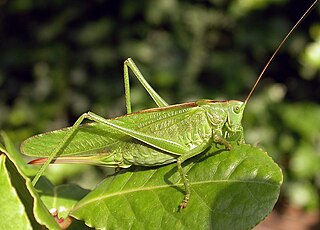
The Tettigoniinae are a subfamily of bush crickets or katydids, which contains hundreds of species in about twelve tribes.

The Phaneropterinae, the sickle-bearing bush crickets or leaf katydids, are a subfamily of insects within the family Tettigoniidae. Nearly 2,060 species in 85 genera throughout the world are known. They are also known as false katydids or round-headed katydids.
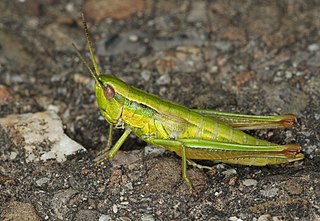
Gomphocerinae, sometimes called "slant-faced grasshoppers", are a subfamily of grasshoppers found on every continent but Antarctica and Australia.
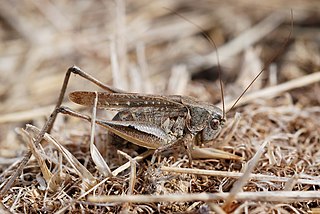
Platycleis is a genus of bush crickets described by Fieber in 1853, belonging to the subfamily Tettigoniinae. The species of this genus are present in Europe, North Africa and temperate Asia.
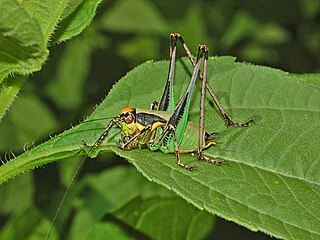
Eupholidoptera is a genus of bush crickets belonging to the subfamily Tettigoniinae.

Acrotylus is a genus of grasshopper in the family Acrididae and the type genus of the tribe Acrotylini.

Anacridium is a genus of "tree locusts" or "bird grasshoppers" belonging to the subfamily Cyrtacanthacridinae.

Pamphagidae is a family of grasshoppers belonging to the superfamily Acridoidea. The species in this family can be found in Africa, Europe and Asia.

Omocestus is a genus of 'short-horned grasshoppers' belonging to the family Acrididae subfamily Gomphocerinae.

Patanga is a genus of grasshoppers in the subfamily Cyrtacanthacridinae. Species are distributed throughout Asia: from India, China, Japan, Indochina and western Malesia. The genus was named by Boris Uvarov in 1923, with the type species the economically significant Bombay locust: which has also been placed in genus Nomadacris.

Rhacocleis is a genus of bush crickets in the subfamily Tettigoniinae and tribe Platycleidini. Species can be found in southern Europe, the Middle East and North Africa.

Eyprepocnemis is a genus of grasshoppers in the subfamily Eyprepocnemidinae with species found in Africa, Southern Europe through to tropical Asia.

Prionotropis is a genus of grasshoppers in the family Pamphagidae. Most described species of Prionotropis are found in southern Europe.
Dericorys is the type genus of grasshoppers of the family Dericorythidae. Species have been recorded from Africa, the Iberian peninsula, Atlantic islands and western Asia.

Uromenus is a genus of bush crickets in the sub-family Bradyporinae and tribe Ephippigerini.

Pamphaginae is a subfamily of grasshoppers in the family Pamphagidae, with species found in Africa, Europe and Asia.

Heteracris is a genus of short-horned grasshoppers in the family Acrididae. There are more than 60 described species in Heteracris, found in Africa, southern Europe, and manland Asia through to India.

Tropidopola is a genus of grasshoppers, erected by Carl Stål in 1873. It is the type genus of the monotypic tribe Tropidopolini and the subfamily Tropidopolinae. Species are distributed in: central-northern Africa, southern Europe and Asia: near East, India up to Siberia.
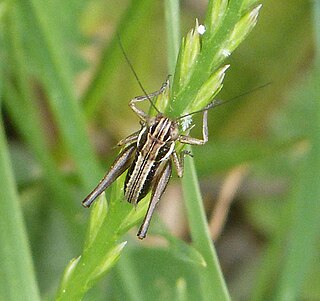
Pterolepis is a genus of bush crickets in the subfamily Tettigoniinae and tribe Platycleidini erected by Jules Pierre Rambur in 1838. The known distribution is from North Africa and the Iberian peninsula.




















